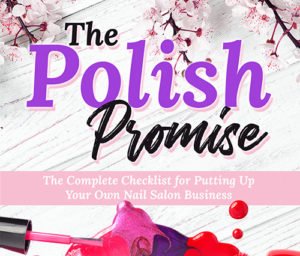Explore the distinct differences and unique advantages of running a clothing boutique versus a nail salon business, providing insights for potential entrepreneurs.
In the realm of personal care and fashion businesses, two prominent contenders often come up for consideration: clothing boutiques and nail salons. Both have their unique advantages and challenges, and deciding which one to venture into depends on various factors, such as your interests, skills, market demand, and budget.
This article delves into the specifics of running both types of businesses, comparing and contrasting the intricacies of managing a clothing boutique versus a nail salon. By the end of this piece, you’ll have a clear understanding of the operational, financial, and marketing aspects of both business types, enabling you to make an informed decision about the best fit for your entrepreneurial journey.
Key takeaways:
- Starting costs: Nail salon – ,000-0,000, Boutique – ,000-0,000
- Common expenses: Nail salon – labor, supplies, marketing; Boutique – inventory, payroll, POS system, marketing
- Profitability: Nail salon – service revenue, boutique – merchandise sales
- Benefits and challenges: Nail salon – consistent demand, licensing requirements, competition; Boutique – creativity, e-commerce opportunities, fashion trends
- Tips and strategies: Research target market, master inventory management and appointment scheduling, invest in skilled staff, engage in continuous marketing, offer personalized service.
Starting Costs for a Nail Salon Vs a Clothing Boutique

When considering starting costs, a nail salon usually requires greater initial investment. Important costs include salon chairs, nail supply equipment, initial inventory of nail paint, sanitation tools, and professional-grade nail dryers. In addition, licenses and insurance will also add to the startup cost.
On the other hand, a clothing boutique’s principal expense is inventory. The cost will fluctify depending on the quality and variety of the clothes you wish to stock. However, other expenditures such as racks, mirrors, mannequins, and cash wraps must be factored in. Point of sale systems and initial marketing ventures will add to your startup costs. Moreover, remember that both businesses will have costs overlapping, including rent, renovations, utilities, and employee wages.
In terms of numbers, the initial setup of a nail salon is approximately $75,000-$100,000, whereas for a boutique, it could be $50,000-$150,000, depending on the factors mentioned earlier. Remember, these costs are estimates and may vary significantly based on specific business plans, geographic location, amongst other variables.
Common Expenses for Running a Nail Salon and Clothing Boutique
In the daily operation of both ventures, several cost factors come into play.
For a nail salon, the biggest expenditure might be labor. Hiring qualified, skilled professionals is crucial for maintaining quality service. Other significant costs include rental expenses, purchasing nail polish and other salon supplies, insurance, permit and licensing fees. Don’t forget about marketing, you’ll need a website, social media presence, and perhaps even traditional advertising.
On the other hand, for a clothing boutique, the bulk of expenses focus more on inventory acquisition. From there, costs diverge into aspects such as retail space rental, payroll for staff, and fixtures for apparel display. Equally important is an efficient point-of-sale (POS) system and robust inventory management software. Marketing expenses here are similar to those in a nail salon.
Understanding these basic costs provides a solid foundation for building a comprehensive business plan for both ventures.
Profitability Comparison: Nail Salon and Clothing Boutique
When comparing profitability, it’s vital to consider differing factors. For instance, nail salons operate primarily on service revenue. Each appointment made means profits, but operation requires skillful professionals and products. However, top-end salons can charge substantial prices, particularly in affluent areas or if they offer specialty services like intricate nail art or high-end products.
On the other hand, clothing boutiques operate mainly from merchandise sales. Their profits depend greatly on the markup of each item sold, and unsold items may lead to losses. However, with the right buying strategy and a keen eye for market trends, boutiques can experience high-profit turnovers. Remember, the profitability of each business type hinges heavily on location, target market, and management efficiency.
While both businesses have unique cost-benefits and challenges, their net income can differ based on both operational and market factors. Therefore, it’s essential not only to focus on potential earnings but also to account for business operational costs to determine potential profitability.
Opening a Nail Salon: Benefits and Challenges
Embarking on a nail salon journey offers several unique advantages. Firstly, it’s an industry that enjoys consistent demand. People of all backgrounds and genders seek professional nail care and beauty treatments, which translates to regular clients and steady income. Secondly, a nail salon can grow significantly by offering more diverse services, such as spa treatments, waxing, or additional beauty services. Finally, the creative aspect of nail art can be quite fulfilling and fun, making it an enjoyable venture.
However, running a successful nail salon is not without its hurdles. Licensing requirements, which vary by state, can sometimes be complex and time-consuming. The competition in the beauty industry can be stiff; therefore, it requires constant innovation and up-to-date skills to stay ahead. Furthermore, sanitation and hygiene regulations demand stringent adherence in order to protect the health of customers and employees, which can add to operating costs. Lastly, salon equipment and supplies can be expensive, requiring significant upfront capital.
Opening a Clothing Boutique: Benefits and Challenges
Starting a clothing boutique is an interesting venture, displaying its own set of unique advantages and challenges.
On the beneficial side, this industry offers a high degree of creativity. As a boutique owner, you get to curate the fashion pieces that suit your personal taste and style. It uses aspects of your personal flair to engage customers. Opportunities for expansion in the industry are also promising, with potential niches such as maternity wear, vintage, or eco-conscious clothing awaiting exploration.
The rapid evolution of e-commerce also allows clothing boutiques to reach wider audiences at a lower cost than traditional brick-and-mortar settings. Social media platforms and online advertisement also provide affordable and effective ways to market to your targeted audience.
The challenges of this industry, however, are also noteworthy. Keeping up with changing fashion trends and consumer demands can be demanding. Ensuring regular inventory turnover while avoiding stock obsolescence is a delicate balancing act. High competition, both from established retail giants and new entrants, is another significant hurdle to successful boutique ownership.
Moreover, sourcing quality merchandise at reasonable prices to maintain a healthy profit margin can be tough. Besides, there are the routine operational tasks, like managing staff and maintaining stores, that require time and effort.
Understanding these benefits and challenges is crucial to successfully navigating the boutique clothing industry.
Tips and Strategies for First-Time Clothing Boutique and Nail Salon Owners
Dedicate time to meticulously research your target market. Understand their preferences, from the top nail color hues to the latest fashion trends.
Master the two systems crucial to salon and boutique operations – inventory management and appointment scheduling. Efficiently organizing stock and managing appointments helps to avoid delays, mix-ups, and enhances the customer experience.
Don’t shirk from investing in experienced and skilled staff. A highly competent team not only ensures quality service but also helps build a steady client base.
Engage in continuous marketing efforts. Maintain an online presence and leverage social media platforms for promotions, informing customers about new arrivals or discounts.
Offer personalized service. It’s the small touches, like recognizing regular customers and remembering their preferences which make customers feel special and increase their loyalty.
Maintain a clean, well-organized, and aesthetically appealing space – whether it’s chic clothing displays or spotless nail stations.
Ensure regular staff trainings for both the businesses. Encourage employees to stay updated with latest techniques in nail artistry and fashion retail service.
Remain aware of all regulatory requirements and ensure absolute compliance. Risk of non-compliance could include hefty fines or even closure.
Practice attentive financial management. Constantly track revenues, costs, and profits. Use this information to make informed decisions about inventory, marketing, and operation expenses.
Effective networking is key. Attend beauty expos and fashion trade shows, connect with suppliers, engage with community events, and join local business associations.
Real Life Successes: Profitable Boutique and Nail Salon Owners
Inspiration abounds when examining the successes within the nail salon and clothing boutique industries.
Victoria Tran, a millennial entrepreneur, tapped into the high-demand market of nail art and organic nail care, leading her to establish “Victoria’s Organic Nails,” which saw significant profit growth within its first few years. Notably, her key to success was leveraging social media and prioritizing customer satisfaction.
On the other hand, Sarah Brown, the owner of “The Chic Stitch,” ventured into women’s fashion with a brick-and-mortar boutique, focusing on unique apparel and accessories. Sarah’s boutique steadily turned profitable, thanks to her strategic location choice, adept pricing strategy, and captivating in-store experiences.
Nick Patel, who owned multiple nail salon franchises, rose to success by consistently updating salon facilities, investing in staff training, and offering loyalty programs.
In the haute couture world, Maxine Bautista, owner of a luxury boutique, “Maxine’s Avenue,” attributes her blooming business to a mix of online and in-person marketing, exclusive designer partnerships, and personalized shopping experiences.
These success stories demonstrate how innovative strategies, market understanding, and dedication can lead to profitability in both nail salon and boutique businesses.
FAQ
What is the difference between a salon and a boutique?
The difference between a salon and a boutique salon lies in that, while both offer beauty services, a boutique salon operates primarily by appointments, presents a more exclusive offering, and may include complimentary perks like spa-like treatments, snacks, and beverages that are rare in conventional salons.
What is the difference between a boutique and a clothing shop?
The primary difference between a boutique and a clothing shop lies in the type of merchandise offered, with boutiques selling higher-end, often locally produced or unique goods at a premium price, and clothing shops typically offering more affordable, mass-produced items.
What is the difference between a beauty shop and a beauty salon?
A beauty shop typically focuses on a single service such as hair cutting or coloring, while a beauty salon offers a broader range of services, attracting a larger customer base.
What is considered a boutique?
A boutique is a small, exclusive business that offers customized service, often specializing in fashionable clothes, accessories, or a specific selection of merchandise.
How are the profit margins different in a boutique clothing store compared to a nail salon?
Profit margins in a nail salon tend to be higher, up to 75%, due to low product costs and high service prices, while boutique clothing stores often see margins around 50%, due to higher product costs but relative pricing limitations.
What are the unique marketing strategies applicable to a clothing boutique and a nail salon?
A clothing boutique could use a fashion show event to drive customer engagement, while a nail salon can capitalize on social media platforms for showcasing unique nail designs as well as running special promotions and discounts.
What factors should be considered when deciding between starting a boutique or a nail salon?
Choosing between starting a boutique or a nail salon requires considering factors such as the expected customer demographics, location, start-up costs, licensing requirements, staff training needs, and market demand for services or products.
